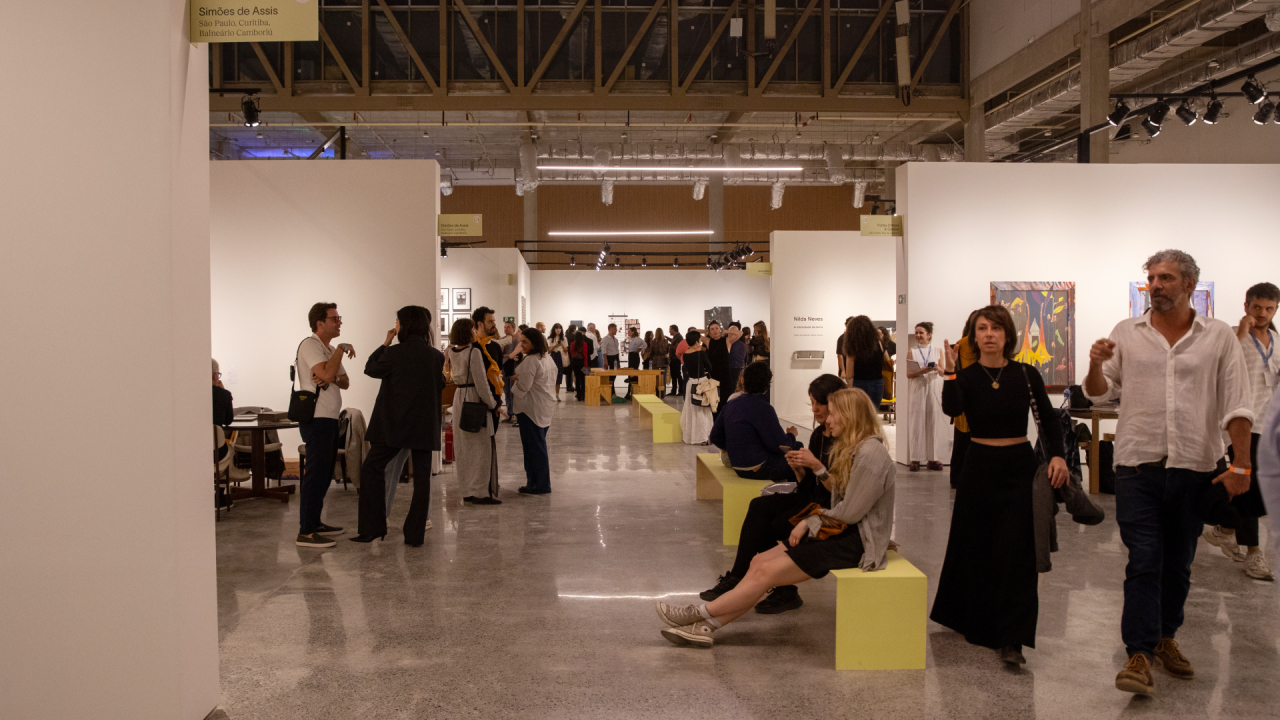A silent yet consistent movement is beginning to reshape the map of the Brazilian art circuit. A recent survey by ABACT (Brazilian Association of Contemporary Art), carried out in partnership with ApexBrasil under the Latitude project, reveals that the number of galleries with branches in the country has nearly quadrupled in recent years, rising from six to 23. More than numbers, this growth points to a strategic repositioning: galleries are moving away from acting solely as static sales spaces to becoming expanding platforms.
ArPa – Art Fair, held in São Paulo’s capital, reflects this new moment. With 60 participating galleries — nine of which (considering only ABACT members here) already operate in more than one state — the fair serves as a thermometer for a scene that increasingly values territorial articulation strategies. Galleries such as Almeida & Dale, Nara Roesler, and Mendes Wood, for example, now have branches in several Brazilian states and have even expanded abroad.
“We are facing a process that broadens the reach and relevance of Brazilian galleries, both inside and outside the country,” says Anamaria Boschi, manager of the Latitude project. For her, the circulation of galleries — whether through new venues, partnerships, or collaborations — transforms not only the logic of exhibition and sales but also the relationships between players in the field.
According to the survey, the mobility identified is not only physical but also symbolic, shifting the Rio-São Paulo axis and promoting the circulation of narratives and curatorial practices beyond dominant zones. Another relevant finding of the study, which surveyed 76 galleries and 45 professionals in the sector, is the growing professionalization of the scene. Diversification strategies, such as inter-gallery collaborations and participation in online marketplaces, point to an attempt to achieve financial sustainability in a market still marked by asymmetries. However, the online environment, while inevitable, still does not rival the physical — and affective — experience of visiting a gallery.
More than responding to a market logic, the geographical expansion of galleries can be seen as a way to decentralize discourses and compete for attention in a country of continental dimensions. By creating branches and networks in other regions, galleries should not merely open new markets by replicating dominant models. It is important that they contribute to a network of relationships and a creative chain that is more diverse and less hierarchical. The question remains: is this mobility truly helping to strengthen local scenes, or merely instrumentalizing new markets?
In Brazil, where public institutions still face structural and budgetary challenges, the role of galleries today goes beyond selling artworks. They must operate as spaces of legitimization, mediation, and cultural production. In this sense, what is at stake is not just the expansion of a business, but the reconfiguration of the foundations upon which the art system in the country is built, at a time when the public sector faces a chronic funding crisis.
Against this backdrop, it is necessary to reflect on the role of private capital in Brazilian cultural production. The 7th edition of the sectoral survey offers not only a useful snapshot but also an invitation: to consider which narratives, artists, and practices are moving — or remaining immobile — in this new configuration. And what this means for the future of contemporary art in Brazil.
